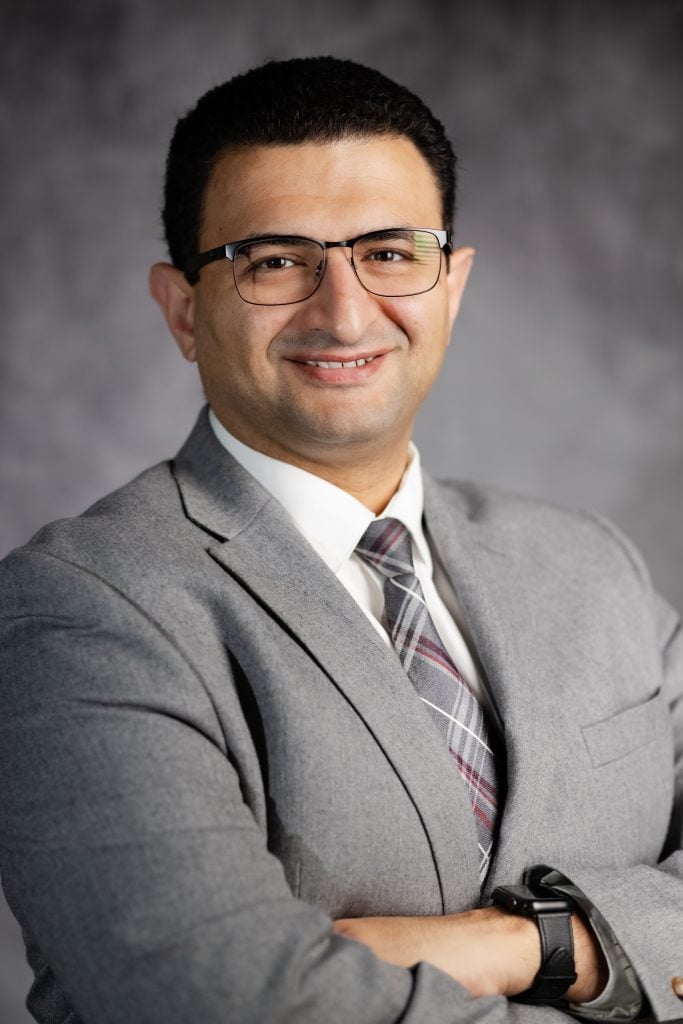Endocrine Society member Michael Morkos, MD, shares his recommendations for best practices in dealing with the often-daunting task of the email inbox. His pointers for accommodating a practice’s patient portal could help any physician manage his or her practice more efficiently.
“The most effective way to do it is to do it.” — Amelia Earhart

The in-basket (inbox) is a primary concern in the outpatient world. From many perspectives, it is the equivalent of the pager for the inpatient physicians.
Many patients may have problems between visits, and many gained electronic access after the Health Information Technology for Economic and Clinical Health (HITECH) Act mandated that electronic health record systems include electronic patient portals. The more patients you see, the more these communications will increase, which can become overwhelming. Let’s discuss some strategies for managing it.
Is it a Burden?
It depends on how you approach it. First, when I look at a busy in-basket (inbox), I often think of the blessings: a busy clinic and many patients to care for. I’m not underestimating the burden but highlighting another perspective, we shouldn’t forget before we dive in to tackle it.
It is not uncommon for patients to send long messages, request labs or scripts between visits, or miss visits and request the work be done anyway. In a busy practice, this can be a lot to tend to between patients. In addition, there is usually time pressure, and many patients will request prompt follow-up.
Messages
The portal messages are a safe place for patients to share their concerns. There are Current Procedural Terminology (CPT) charge codes for portal messages, but these charges may discourage the patients from sharing their concerns. If they know they will pay for such messages, they may hesitate to send their problems, which can delay their care and decrease revenue. You may be surprised, but I find these messages a great opportunity to care for these patients during a scheduled visit. They fill the empty slots and go to the waitlist to make for unanticipated cancelations.
I’m grateful to have licensed practical nurses (LPNs) filter these messages in my practice. They know how I categorize and triage them, which is critical for maintaining sanity in a busy practice.
I suggest having three broad categories for classifying these messages:
1. Simple questions. The triaging nurse can review the physician’s last note and answer accordingly. They don’t need to message about them.
2. Long messages or patients with several concerns. They should reach out to these patients and recommend arranging a sooner visit. This approach will provide these patients with the best service, address all their issues during that visit, and avoid overwhelming the physician with the task of spending 10 to 20 minutes reviewing all the details and responding with a lengthy reply. The most common comment I get from most physicians is the lack of availability in months. (Please read the last section of this article to find a quick and easy-to-implement mitigation.)
3. Brief concerns requiring the physician’s advice. If the triaging nurse is unsure how to respond, these messages should be forwarded to the physician.
Life gets in the way sometimes, and the inbox can become overwhelming and extremely busy. It is not uncommon for it to be flooded with requests after long weekends, off days, and annual vacations, necessitating hours of work.
It is very important to be transparent with patients about these regulations. If a patient previously sent long messages, the physician should respectfully inform them during their visit that they cannot respond to these lengthy messages. Patients should keep their concerns for the upcoming visit or arrange an earlier appointment if needed. I also set expectations in my practice: I don’t review glucose logs or manage labs between visits. I understand my limitations and what I can and cannot manage.
Labs
To make your life easier and more streamlined, I suggest establishing your practice around pre-ordering labs before the visits. The goal is for patients to get their labs done a few days before the visit so they can be ready for discussion during the appointment. The patients will maximize the benefit from the visit, as you can ask all the relevant questions based on the recent labs, explain them, and have a detailed, agreed-upon plan before they leave.
On the contrary, if you order the labs for the patients to get after leaving the visit, you’ll have to review them afterward. You may often have more questions and a modified plan to convey. Will you call the patient? Or ask your medical assistant (MA) or nurse to contact them? Will they get back to you for additional data or questions? And the cycle keeps getting longer. I wouldn’t say I like that and will strive to avoid it.
I usually order the labs for the following visit during the current visit and set the time frame for these labs around the planned next visit. This ensures that mine will be excluded if the patient goes for another physician’s labs at a different time interval. I’ll also clearly write in the patient instructions section to get the labs done before the upcoming visit, along with the relevant instructions for these labs.
For patients who miss these instructions, I will set the expectation that I will inform them about the results via a portal message or a mailed letter, along with the expected time frame for both. Additionally, if there are significant issues, I may need to see them sooner for further discussion. Nurses are a valuable asset and their time is expensive. Therefore, calling patients with routine results is not the best use of their time.
Prescriptions
We should save precious time on issues well-trained nurses or MAs can handle. The homework is to have a clear and comprehensive plan for medication refills and substitutions. This will give your staff the autonomy to do them automatically and clear your inbox of all the refills except for the controlled substances, which is reasonable.
To make your life easier and more streamlined, I suggest establishing your practice around pre-ordering labs before the visits. The goal is for patients to get their labs done a few days before the visit so they can be ready for discussion during the appointment.
Where I practice, I’m lucky to have an excellent service line leader who worked this list of substitutions, and all the faculty will sign off on them annually. If an insulin brand is not covered, all the approved alternatives are available for the staff, and they’ll check what’s covered and send the comparable formulation. The same goes for prior authorizations, where they’ll run them in the background and fill out the forms, and I’ll only sign whenever needed. This excellent setup ensures that our valuable time will be dedicated to where the medical expertise is needed.
Another important thing to consider is how many refills to give. Every practice is different. A reasonable rule may be to provide an annual supply for compliant patients but restrict it to those who are not.
Availability
It is crucial to maintain open slots for patients with urgent needs. They include those sending portal messages, calling with concerns, post-hospital follow-ups, or clinic patients you want to see soon. One suggestion is to freeze 10% of your slots, which can thaw automatically in one or two weeks before these dates. Schedulers shouldn’t fill these slots routinely as they are reserved for such patients. If not filled, they would be automatically available for routine appointments or patients on the waitlist, which is another advantage. It will be great if routine patients can find soon visits with you frequently.
Overwhelming Inbox
Life gets in the way sometimes, and the inbox can become overwhelming and extremely busy. It is not uncommon for it to be flooded with requests after long weekends, off days, and annual vacations, necessitating hours of work.
As clinicians, we should strive to ensure this remains an exception rather than the norm. By implementing the strategies mentioned above, I hope your flooded inbox will gradually improve and become manageable.
Morkos is codirector of the IUH Thyroid and Parathyroid Center, and assistant professor of clinic medicine in the Department of Endocrinology, Diabetes, and Metabolism at the Indiana University School of Medicine, in Indianapolis. An Endocrine Society member since 2015, he is an active member of the Society’s Early-Career Special Interest Group.

